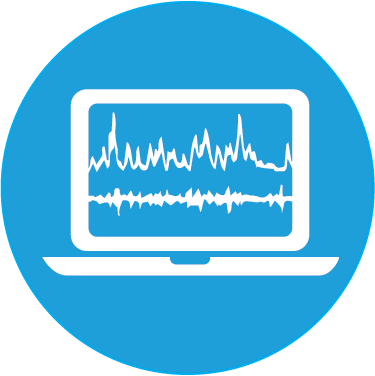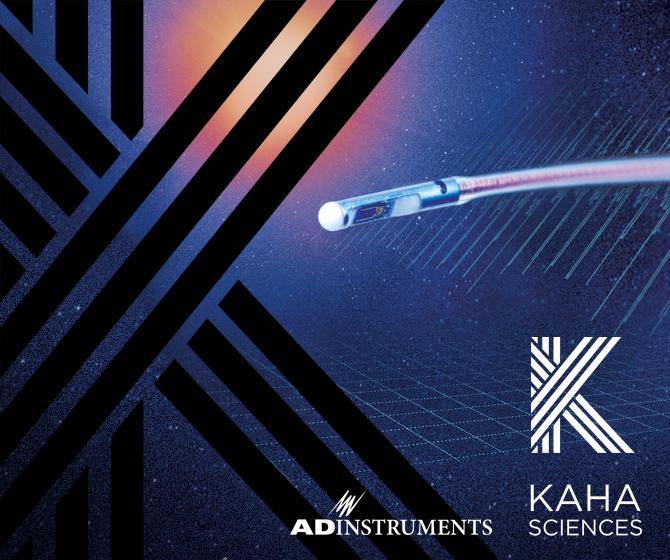Telemetry allows for the collection of physiological data over days, weeks, or months from animals in their home environment. However, performing these chronic studies can present a variety of challenges in terms of experimental design and the analysis of large data sets.
To help out researchers new to the technique or those looking to pick up some additional tips, we asked Fiona McBryde, a Cardiovascular Physiologist from the University of Auckland to share her top three tips for using small animal telemetry in research.
#1 Surgical Skills - Take your time and ask around
One of the biggest challenges you will face when starting with telemetry is the required surgical skills.
Placement of the telemeters requires a certain level of care and expertise to get right.

My group tends to record a lot of signals using the range of Kaha telemeters - however, the different surgical techniques required for each telemeter take time to develop. The key is to start conservative, i.e., just measuring one, maybe two signals, to get familiar with the different techniques.
In terms of practical tips, my advice for those starting out with the technique is not to take your training from just one person. We all do it slightly differently, and there's not necessarily one perfect way of doing it. Take instruction from your supervisor, access the training videos on the website, and if you've got other postdocs in your lab, ask if you can sit in on their surgery and see how they're doing it!
Watch Now: Step-by-step Telemetry Surgical Videos »
#2 Telemeter Care - It’s all in the explantation!
Kaha’s rat telemeters are designed to be reused - so if you look after them properly, they will last you a long time. For example, I have some that have been in use for four or five years and are still working like new!

Ultimately, how long your telemeters will last comes down to your care and handling of them. One of the main reasons for needing a new telemeter is damage to the recording wires. This usually happens during explanation (removal of telemeter). At this point, you’re generally done with your experiment and have all your data, and you can become a bit careless in the removal process.
If the telemeter has been in-situ for a while, the connective tissue will have grown around the telemeter body and recording wires. Therefore, it is key to take your time when removing the telemeter.
One of my postdocs will spend over an hour under the microscope, carefully removing her telemeters. So moral of the story - take your time!
Find out more: Surgical instruction for explanting telemeters »
#3 Data Processing - There is such a thing as too much data…
With telemetry, you've got access to high-resolution data 24 hours a day, seven days a week. And if your protocol is set to go for 6 weeks… well, that’s a lot of data!
My advice for those just trying to work out how to cope with all of this data is to think about the end result, ideally before you have even started the data acquisition phase of the experiment.

Some things to think about might include:
- What’s your hypothesis?
- What signals are you recording?
- How will you present/analyze your data?
- What graphs/figures will you make? I.e., Hourly averages? Daily averages?
- What statistical tests will you use?
For example, it might help to think of it in terms of figures in a paper. Are you going to have a graph that shows a daily average of blood pressure over a three-week period, with an intervention in the middle? If so, do you really need 500-hertz data, 24 hours a day, or could you consider scheduling your data sampling using macros or scripts?
Obviously, it all depends on the particular project. What works for one project may not apply to another - so it’s worth sitting down and thinking about how you will process your data before you get stuck into a 6 week (or longer) protocol!
Find out more: Tips for handling and analyzing large telemetry data sets »
Additional Resources:
Four Benefits of Using Telemetry in Research »
Telemetry 101: Exploring Small Animal Telemetry for Research »
Five Unique Neuroscience Applications Using Telemetry »
Cardiovascular applications using telemetry »
Example LabChart macros for telemetry »

Fiona McBryde (PhD) is a Senior Lecturer at the University of Auckland and has been using telemetry in her cardiovascular research.
Her research focuses on understanding blood pressure regulation in the brain during health and disease, with a particular focus on ischemic stroke.
For more information about Fiona and her research, you can read our full customer story here »
Telemetry for Cardiovascular Research
Take your cardiovascular research to the next level using small animal telemetry - with options to measure pressure, ECG, sympathetic nerve activity, and tissue oxygen concentration continuously over the course of your experiment.

